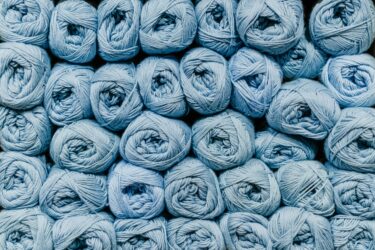
Table of Contents
Share this article
The effects of the imposition and subsequent delay of US tariffs have rippled around the globe for the last couple of months. The 90-day pause is up on August 1st, and the likely outcome is as unknown as the sudden implementation. The phrase ‘the only constant is change’ has never felt so appropriate.
In the apparel sector, the challenge has been particularly salient around the now-paused tariffs. 98% of clothing sold in the US is imported. If the tariffs go ahead – or in a similar vein – as those stated on April 9th, key countries in the cut-and-sew portion of the supply chain – those nodes adjacent to import – will be hit with the highest US tariffs, barring any changes from ongoing negotiations.
Possible Responses to Tariffs and Instability
Given the prolonged uncertainty regarding tariffs – and the broader shifting commercial landscape the US and the world is experiencing through Executive Orders – companies are considering the following options for their supply chains:
Knit
Supply chains double down and hold their existing presence in tariffed countries, largely predicting that any tariffs incurred would be passed on to the end consumer. The average tariffs on clothes, shoes, and accessories are already more than five times higher than on other U.S. imports, so this wave of additional tariffs could easily further impact the purses of those closest to or below the breadline.
It is, however, possible that suppliers in tariffed countries could absorb the tariffs in the short term to maintain orders with customers. This has potentially the best outcome from a sustainability stand-point – relationships extend and investment into labour best practices, new technology, and innovative materials continues – though likely at a slower pace.
Consolidating supply chains becomes attractive, driving volume through a smaller number of suppliers and deepening trust. Though harder to justify the cost upfront, the advantage of brands and retailers having access to de-risked, sustainable, and visible supply chains through certification schemes like organic certification and Cotton Made in Africa, present longer-term strategies too.
Unravel
Tier 1 and tier 2 suppliers, those most directly connected to a company’s supply chain, could shift to countries with lower tariffs – or at least away from China. Rules of Origin are complicated and often undefined by countries with regards to what constitutes the attribution of ‘value add’ at the country level. This makes things complicated and risky but potentially has the least impact on the customer.
Chinese tariffs were already introduced earlier in 2025, causing reactive shifts to other countries, but the potential second unilateral set of tariffs is making those shifts even less economical. The CAFTA (Central America Free Trade Agreement) countries have gained more interest as potential hubs for supply chain operations, though there are concerns for labour-related risks in countries like Nicaragua, and labor costs in Mexico.
When new supply chains are being created, it is imperative that sustainability metrics are taken into consideration. Lack of due diligence and understanding of water stress or soil health, for example, could have anywhere from short to medium and/or long-term impacts directly on raw cotton price.
Environmental and social risk is now linked to current and future cost and needs to be integrated into financial modelling as such. Integrated climate and nature risk assessments are a powerful tool in these scenarios for making informed decisions. In addition, supplier scorecards are useful to put in the hands-on merchants and sourcing teams as they negotiate new (or existing) contracts.
Cutting the Thread
The most widely thought-to-be desired outcome by the current US administration is a re-ignition of industry and domestic manufacturing within the country. This would be a long-term play given that the US is not currently set up with the scale, skills, and production facilities needed to take on this volume ‘overnight’.
However, some companies are taking steps in this direction. Anecdotally, we heard one brand has already moved over a quarter of its supply chains to the Western hemisphere, including the US, as a result of recent economic trade shifts. Again, this could lead to higher costs for garments in order to justify the production cost increase.
One result of this move could be an increase in ‘slow’ fashion with shorter supply chains. Compared to fast fashion where margins are tight, slow fashion has higher margins, a smaller environmental footprint (product volumes are lower) and the impact on social elements of the supply chain – those producing the garments – are not as pressurized.
As decisions are being made here and now, the integration of the triple bottom line (people, planet, and profit) is important. An indirect result of any of these realities – all of which likely result in cost increases either immediately or over time – is that circular business models become more attractive. Reuse, repair, recycling, take-back, and secondary markets will be much more attractive financially for the end consumer, shifting demand further in this direction.
The US secondhand market grew 14% in 2024, outpacing the broader retail clothing market by five times. Online resale is responsible for the vast majority of that growth, now accounting for 88% of resale spend. (Re)establishing successful opportunities in apparel requires consumer incentives to be aligned and engaging, the implementation of design for durability/quality principles and the ability to scale.
How Anthesis Can Help
In the coming months, and beyond, we aim to guide our clients in making the ‘right’ choices; those that have longevity and that support the just transition to a Net Zero future while balancing and acknowledging economic drivers. This will mean doing things like:
- Supporting the investment and implementation of digital documentation and factory Standard Operating Procedures (SOPs).
- Increasing supplier engagement and partnerships to strengthen relationships. Established trust goes a long way when situations become strained.
- Refreshing assessments of circular business models to understand if they have become more attractive.
- Ensuring supplier scorecards or equivalents have integrated environmental metrics from data sources like the Higg index.
- Ensuring risk is effectively integrated into a company’s ERM. Starting with a double materiality assessment is a particularly useful place to start.
- Getting into the mindset of the end consumer in order to consider the strains and desires on demographics over time. Communicating and balancing brand, value, and pricing will continue to be paramount.
The core of a sustainable business is often found within its supply chain and operations, regardless of the threat of tariffs or regulatory shifts. We support clients to drive truly sustainable change on a global scale, working with a diverse range of brands, retailers, suppliers, and manufacturers to understand the sustainability performance of their suppliers and consider both the social and environmental impacts of global supply chains.
Explore our Supply Chain Solutions
Creating ethical, just, and environmentally-friendly supply chains through transparency, traceability, compliance, and supplier engagement.
We are the world’s leading purpose driven, digitally enabled, science-based activator. And always welcome inquiries and partnerships to drive positive change together.



